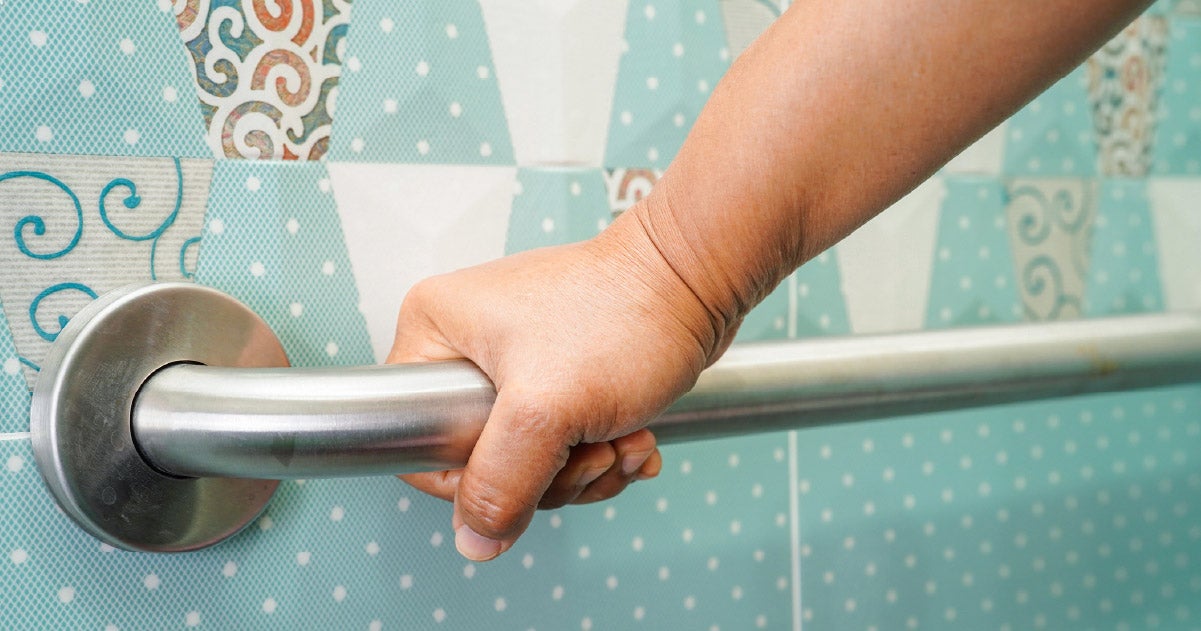by Stephen Jon Romero, RA

Maneuvering throughout the home is something that many of us take for granted. However, for individuals with mobility impairments, everyday tasks can become daunting challenges. The Americans with Disabilities Act (ADA) of 1990 offers important protections for individuals with disabilities, including guidelines for barrier-free access. While this law mainly addresses public spaces, we can all take guidance from its standards to create a more accessible and accommodating environment in our own homes, particularly in areas like doors, bathrooms, kitchens, and other spaces that can be difficult for someone with mobility challenges.
For some, using the toilet, shower, or bathtub can be not only difficult but also dangerous. It’s true that the risk of slipping and falling is a genuine concern. This is where the installation of grab bars can make a meaningful difference. These accessible grab bars provide essential support, helping individuals maintain their independence in the bathroom. They’re widely available in materials like stainless steel, brass, and vinyl, and come in various finishes and colors to complement your home. Typically, grab bars are about 1 ½ inches in diameter and range from 12 to 45 inches in length, allowing for flexible installation on walls, floors, and shower or tub decks. Each installation should be thoughtfully considered to meet the specific needs of the individual. While grab bars themselves are relatively affordable, proper installation may require adding support backing to the walls or floors. This may involve some renovations, but the resulting safety and peace of mind can be invaluable.
In addition to bathroom concerns, navigating steps and small changes in elevation can be extremely challenging. Accessibility becomes crucial, especially when entering or exiting the home. Ramps can be a good solution for minor elevation changes when there is enough space available. These ramps provide a gentle slope that helps avoid the potential hazards posed by steps. Ideally, ramps should follow a slope of no steeper than 1:12 (that is, for every 12 inches of horizontal distance, there should be a maximum of 1 inch of vertical rise/fall), ensuring safety during use. For instance, if there are two 5-inch high steps with a total height of 10 inches, a ramp would need to be at least 10 feet long. Ramps can also include turns or switchbacks, making them adaptable to various spaces. For added safety, they should be at least 36 inches wide and equipped with handrails on both sides. Ramps can be built from materials like wood or concrete, or even purchased as pre-manufactured options. In situations where the height difference is significant and ramps aren’t practical, outdoor stairlifts can offer an alternative.
Inside the home, steps connecting different levels can pose serious challenges, particularly when they lead to essential areas like bedrooms and bathrooms. Stair lifts are a solution designed to help individuals maintain their independence and access these critical spaces. A stair lift consists of a chair that travels along a rail mounted to the stairs, making multi-level homes much more accessible. Typically powered by batteries, stair lifts recharge through a standard electrical outlet when not in use and can be controlled by a remote or buttons located on the chair. Many models come equipped with footrests, armrests, and safety features like seat belts and obstruction sensors, ensuring a secure and comfortable ride. Stair lifts are available for both straight and curved staircases, allowing for personalized solutions based on the home layout. Installation is best performed by a qualified professional to guarantee safety, and the investment can provide immense peace of mind. Costs for stair lifts can vary, with prices ranging from around $2,000 to $8,000 for a straightforward installation, and potentially reaching up to $20,000 for curved designs.
Choosing to make these enhancements is a meaningful step toward fostering a home that prioritizes safety, accessibility, and well-being, ensuring that individuals with mobility challenges can feel more comfortable and independent in their own space.

